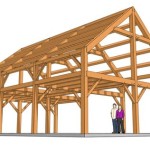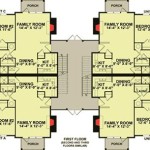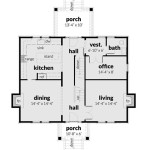Plans To Build A Garage
Building a garage is a significant investment that can enhance the functionality and value of your property. From protecting your vehicles and storing tools to creating a workshop or guest room, a well-designed garage can serve multiple purposes. Before embarking on this project, careful planning is essential to ensure a successful outcome. This article will delve into the crucial aspects of planning to build a garage, including considering your needs, obtaining permits, and choosing the right materials and design.
1. Defining Your Needs and Budget
The first step in planning to build a garage is to define your needs and establish a realistic budget. Consider the following factors:
- Vehicle Size and Number: Determine the number of vehicles you need to accommodate and their dimensions to ensure sufficient space.
- Storage Needs: Assess your storage requirements, such as tools, equipment, seasonal items, and recreational gear. Consider incorporating shelves, cabinets, and workbenches for organization.
- Additional Use: If you plan to use the garage for activities like a workshop, a home office, or a guest room, factor in the necessary space and amenities.
- Budget: Establish a clear budget that accounts for materials, labor, permits, and any unforeseen expenses.
Once you have a clear understanding of your needs, you can start sketching out preliminary designs and determining the size and features of your garage. Remember that the size, complexity, and materials used will directly impact the overall cost.
2. Obtaining Necessary Permits and Approvals
Before construction begins, it is crucial to obtain the necessary permits and approvals from your local authorities. These requirements vary depending on your location and the scope of your project.
- Building Permits: Most jurisdictions require building permits for new structures. These permits ensure that your project meets local building codes and regulations.
- Zoning Permits: Zoning regulations dictate the type of structures allowed in your area. You may need a zoning permit to ensure your garage complies with local zoning laws.
- Site Plan Review: Some municipalities require a site plan review to ensure your garage is located appropriately on your property and does not affect neighboring properties.
Applying for permits can be a time-consuming process, so it is essential to start early and gather all necessary documentation. Be prepared to provide detailed plans, specifications, and calculations as part of your application. Consulting with a professional architect or structural engineer can help you navigate the permitting process smoothly.
3. Selecting Materials and Design
The choice of materials and design for your garage will significantly influence its appearance, durability, and cost.
Materials:
- Foundation: Concrete foundations are common and provide excellent stability. Other options include concrete block or pier foundations.
- Framing: Wooden framing is a traditional and cost-effective option. Steel framing offers greater strength and resistance to pests and moisture.
- Roof: A gable roof is a simple and common choice for garages. Other options include hip, shed, or flat roofs.
- Siding: Vinyl, wood, fiber cement, and metal are popular siding options for garages. Choose a material that complements your home's exterior and meets your budget.
- Doors and Windows: Garage doors come in various styles, sizes, and materials, including steel, aluminum, and wood. Consider the features you need, such as insulation, automation, and security. Windows can enhance natural lighting and ventilation in your garage.
Design:
The design of your garage should complement the style of your home and meet your functional needs. Consider factors such as the garage's placement on your property, the roofline, the exterior finish, and any additional features like a loft or a second story.
Consulting with an architect or designer can help you develop a design that is both aesthetically pleasing and functional. They can assist you in choosing materials, optimizing space, and incorporating energy-efficient features. Numerous online resources and software programs can also help you visualize and design your garage. By carefully planning and selecting materials and design elements, you can create a garage that enhances your property and meets your specific needs.

The How To Build Garage Plan Backyard Project 6022
:max_bytes(150000):strip_icc()/free-garage-plan-5976274e054ad90010028b61.jpg?strip=all)
9 Free Garage Plans

Detached 24 X22 Standard Two Car Garage Plans Blueprint Digital

To Build A Detached Garage Twinsprings Research Institute

16 X 20 Garage Yard Storage Gable Work Building Project Blueprints Plans Step By Instructions Included Design 51620

1 2 3 4 Car Garage Plans With Blueprints

3 Car Garage Plans How To Build A Custom Diy

Garage Plan 76019 2 Car Apartment Craftsman Style

Detached 24 X24 Two Car Garage Loft Custom Plans Blueprint Digital

Detached Garage Plans For Growing Large Families








